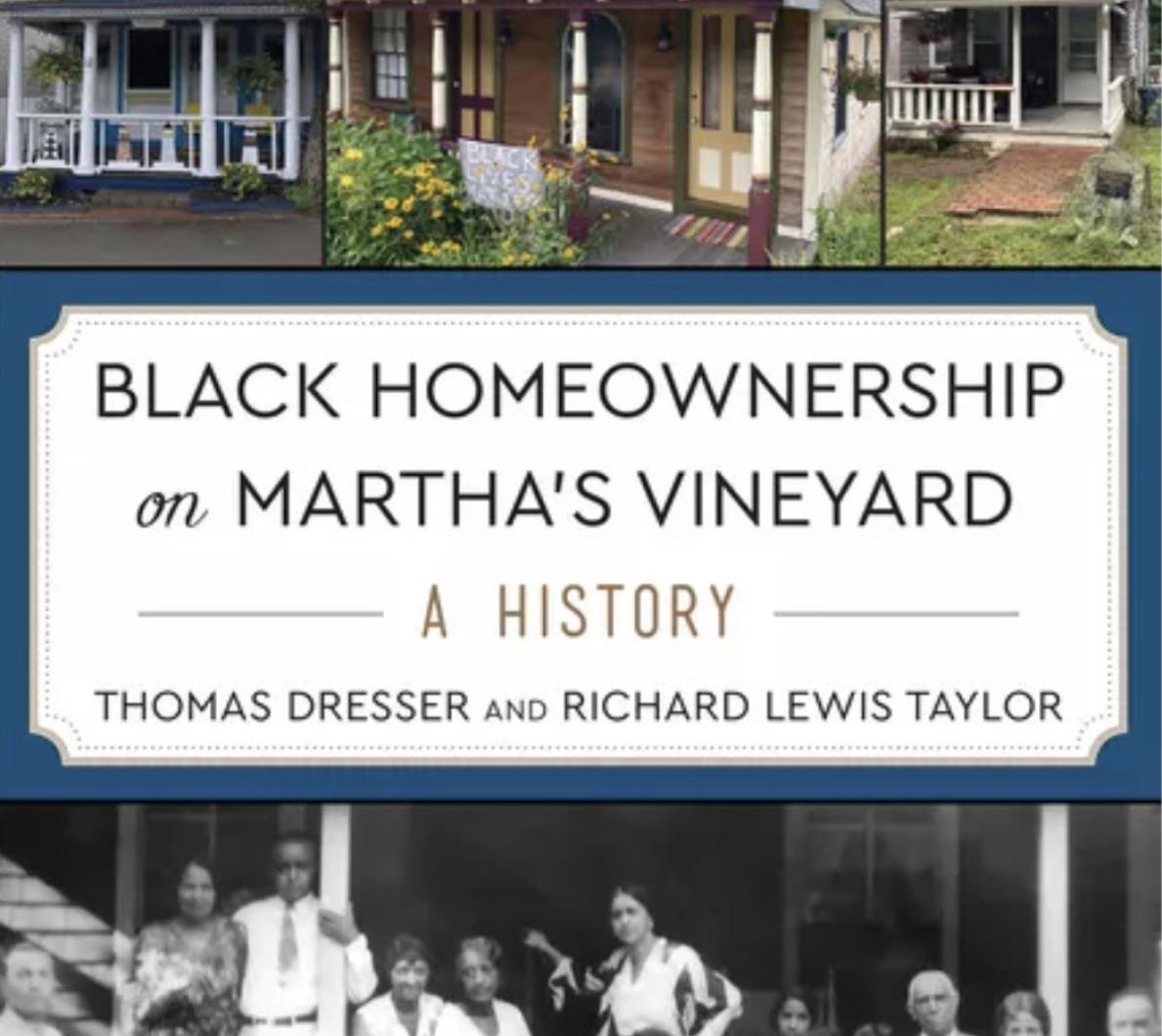When lawyer and real estate developer Richard Lewis Taylor first met local history writer Tom Dresser on his Oak Bluffs patio two years ago, collaborating on an historical project was just a germ of an idea.
This month that idea culminated in a new book called Black Homeownership on Martha’s Vineyard: A History, published by History Press. The book seeks to construct a nuanced narrative of Black homeownership on the Island, and combines Mr. Taylor’s legal expertise with Mr. Dresser’s penchant for historiography.
“Race has played a major role in who can and cannot own real estate in America,” Mr. Taylor said in a recent interview. “Our book explores the impediments, challenges, struggles and triumphs of the African American population on Martha’s Vineyard and how they navigated against these forces to own property as early as the 19th century.”
A graduate of Harvard Law School and Harvard Business School, Mr. Taylor served as Gov. Bill Weld’s secretary of transportation and was chairman of the MBTA. A longtime seasonal resident of the Vineyard he is the author of Martha’s Vineyard: Race, Property, and the Power of Place.
Mr. Taylor also writes the Gazette’s Oak Bluffs town column.
Mr. Dresser had a career as a teacher and in nursing home management before moving to the Vineyard full-time in 1995. He is the author of 15 books about the Vineyard.
Through interviews with Black legacy homeowners on the Vineyard, the authors constructed a web of personal and generational narratives that underscore how generational homeownership is crucial to the long-term prosperity of individuals and communities. Mr. Taylor’s analysis of the court cases and major historical events that shaped Black homeownership across America combined with these stories place the Vineyard experience in a national context.
Both authors consulted genealogical documents and scoured their social networks for sources.
The Vineyard’s historically Black neighborhoods, such as the Highlands and the “gold coast” neighborhood overlooking Inkwell Beach in Oak Bluffs, have maintained their legacies through generational homeownership. Families like the Colemans and the Jacksons have made this possible by keeping their Oak Bluffs properties within their families, the authors maintain.
“It’s not just buying a house today. It’s buying a house 100 years ago and holding it,” Mr. Dresser said. “It’s families that have to make that commitment and understanding that the property can be used as equity for kids going to college, for starting a new business [and] giving your kids and your grandkids a next step.”
Black Vineyarders did face significant barriers to homeownership. White landowners’ use of restrictive covenants to block Black people from renting or purchasing land is well-documented in the book. However, Mr. Taylor points out that these practices were not codified on the Island as they were on the mainland — a distinction that has helped the Vineyard’s Black communities endure.
“Of course, there were individual cases where there were covenants and deeds, or people just themselves did not want to sell to a different party,” Mr. Taylor said. “But the difference is that the institutionalization of discrimination on the mainland did not exist on the Vineyard. That was the key.”
The book holds up the history of the Methodist Campground in Oak Bluffs as an example of what happened in the past to Black homeowners. This neighborhood was welcoming to Black families until early in the 20th century.
“Between 1890 and 1915, there were about 25 Black families there,” Mr. Dresser said. “They were gradually edged to the side of the campground and then out, and they were forced to move out or sell their house, or literally move their house. That was kept quiet for 100 to 120 years.”
Mr. Taylor stressed that while stories like these are crucial to the project, he does not want them to eclipse the book’s main message: that Black communities on the Vineyard are thriving, and generational property ownership is central to their endurance.
“The book demonstrates that property remains a defining characteristic and profile of fundamental rights, liberties and freedom in this country,” Mr. Taylor said. “Property on the Vineyard for African Americans is freedom, happiness, equity and legacy. We want people to appreciate that as they read the book and contemplate how their families can own property and leave property to [their] progeny.”
Black Homeownership in Martha’s Vineyard: a History is available for purchase at several local booksellers, including Bunch of Grapes and Edgartown Books.





Comments (2)
Comments
Comment policy »